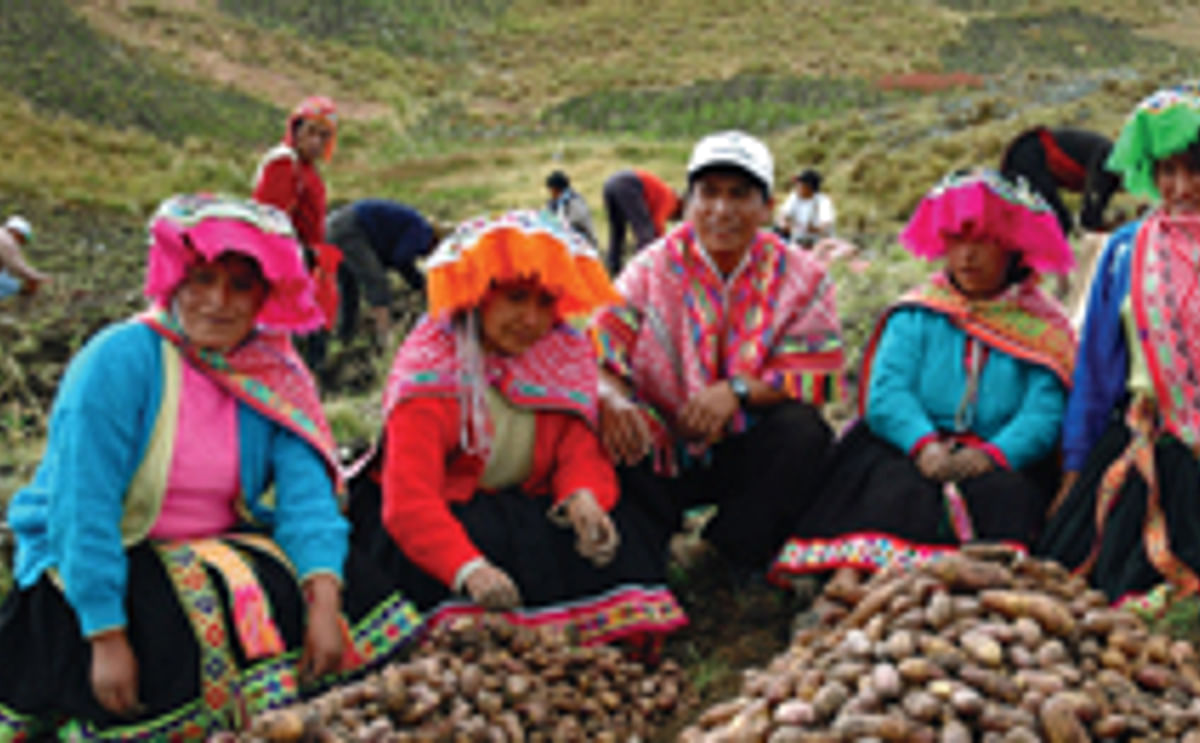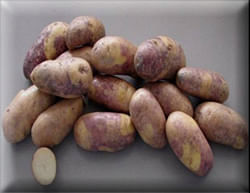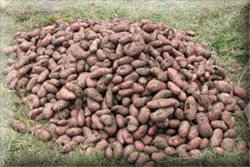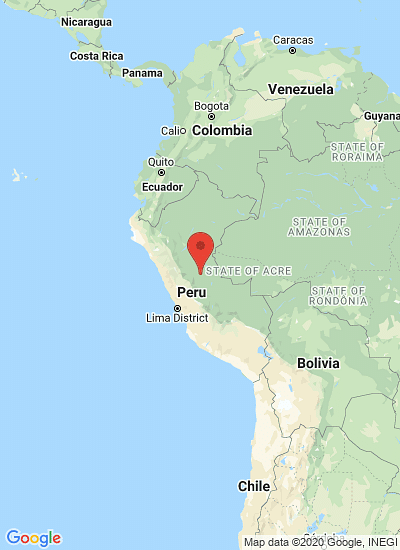Potato farmers in Peru (International Potato Center)
Resistant potato varieties make the difference between having enough to eat or not

Excessive rains and an increased presence of late blight disease devastated the Cusco region of Peru in January-February 2010, which was declared a national emergency area.
The food security of communities in the Paucartambo province of that region was maintained in large part thanks to two late blight resistant potato varieties, called Pallay Poncho and Puka Lliclla, developed by the International Potato Center.
“Three years after their formal release, the yield of these two potatoes was about 8-times higher than any of the 150 native potato varieties grown by these communities during this particularly wet season,” explains Stef de Haan, a potato breeder at the Center (known by its Spanish acronym, CIP), adding “it made the difference between having enough to eat or not.”

Pallay Poncho (Courtesy: INIA)
In 2010, the late blight resistant variety yields held up, while those of the local varieties was only around 2 tons per hectare, due to high damage from the fungus-like late blight disease.
Back in 2003, CIP joined forces with the Peruvian Ministry of Agriculture and Peru’s National Institute of Agrarian Innovation (INIA) to conduct participatory varietal selection after late blight wiped out the native potato harvest of a large farming community in Paucartambo. It was the first time that late blight had occurred at this high altitude.
“The rise in temperature due to climate change makes formerly untouched areas fall victim to the potatoes most feared disease,” says CIP agronomist, Manuel Gastelo, “And each year, late blight has become even worse.”

Puca Lliclla (Courtesy: INIA)
After 5 years, and in close collaboration with the community, two clones with the best properties were locally selected and officially released by INIA as the new varieties, Pallay Poncho and Puka Lliclla.
The small-scale Andean farmers, averse to risk, grow them along with numerous native varieties.
The improved varieties do not replace local ones, but they are used as a sort of insurance in case traditional varieties get damaged by disease.










